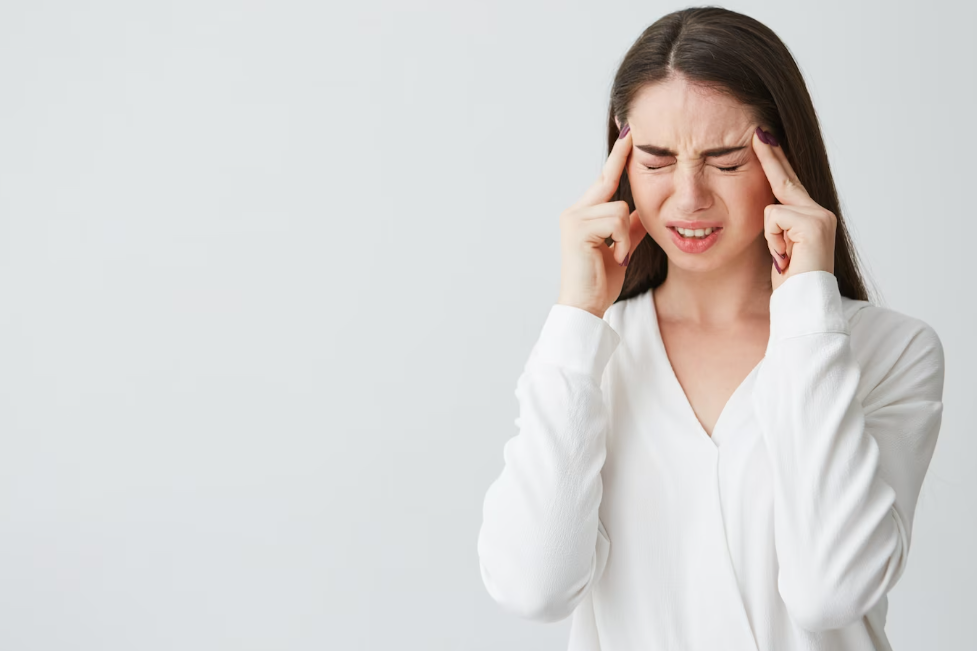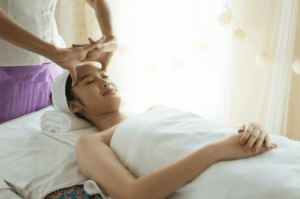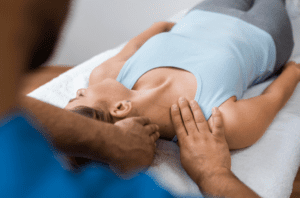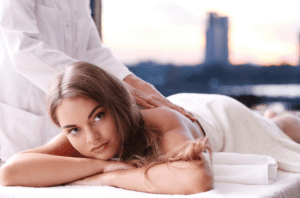Have you ever had one of those headaches that won’t go away? The kind that throbs behind your eyes and makes you want to crawl into a dark room. Migraines can be debilitating, rendering you useless for hours or even days. While medication may be necessary at times, there are natural remedies you can try to massage a migraine away. Massage therapy is an effective way to relieve migraine pain and reduce headache frequency.
Specific massage techniques target trigger points and tight muscles in the head, neck, and shoulders to ease discomfort and increase circulation. In just 30 minutes, a massage can unwind your mind and body, releasing endorphins that act as natural painkillers. So the next time a migraine strikes, don’t suffer in silence. Try to massage a migraine – your head will thank you.
Understanding Migraine Headaches and Massage Therapy
A migraine is more than just a bad headache. It’s a complex neurological condition that causes severe pain, nausea, and sensitivity to light and sound. Massage therapeutic treatment can help relieve migraine pain and prevent future episodes.
Massage a migraine increases blood flow to your head and neck, which can ease migraine pain. Gentle neck stretches and trigger point therapy release tight muscles that may be contributing to your migraine. Massaging pressure points like the webbing between your thumb and index finger, the fleshy area between your nose and upper lip, and the inner corners of your eyes can provide relief.
You’ll want to start slowly. Have your massage therapist use light to medium pressure, avoiding any harsh or jarring movements. Aromatherapy using peppermint, lavender or eucalyptus essential oils may enhance the soothing effects.
For at-home relief, try gently massaging your neck and temples, applying warmth to the back of your neck, and doing easy stretches. When a migraine strikes, lie down in a dark room and place a cool compress on your head.
Don’t underestimate the power of massage a migraine. Receiving regular massage therapy, especially during high-stress times, can help prevent migraines from even forming in the first place. Massage therapy, combined with medication and lifestyle changes, offers a holistic solution for managing and overcoming your migraines.
Self Massage Techniques to Relieve Migraine Pain
A migraine can knock you out for hours or even days. When medication isn’t enough, self-massage techniques may offer relief from the pounding pain.
Start with your neck and shoulders.
Migraines are often caused by tension in the neck, so releasing knots can help. Use your fingers and thumbs to apply firm pressure to tight areas, slowly kneading out tension. Massage the base of your skull, applying small circular motions. Roll your head slowly from side to side to stretch your neck.
Work your way up to your temples.
This is where migraines tend to throb the most. Place your fingertips on your temples and make small circles, applying gentle yet firm pressure. Massage in short bursts of 15-30 seconds at a time.
Don’t forget your face.
Migraine pain can make even a gentle touch seem unbearable, so start slowly. Make light strokes outward from the centre of your forehead. Massage your cheekbones and around your eyes. Apply pressure to points just below the base of your nose and at the outer edge of your eyebrows.
For tension at the back of your head.
Slowly roll your head in circles, first in one direction and then the other. You can also try gently pulling on your hair at the base of your skull, applying steady pressure for several seconds.
The key is to start gently and avoid overstimulating sensitive areas. Be patient through trial and error to find what massage techniques work for relieving your migraine pain. Self-massage, combined with rest in a dark room, can be an effective way to ease migraine suffering without medication. Keep at it – relief may be just a massage away!
Targeting Migraine Trigger Points With Massage
Targeting the trigger points that can lead to migraines is key. Massaging these areas helps release tight muscles and relieve pressure to provide relief from your headache.
1. Neck and Shoulders

Your neck and shoulders contain muscles that can tense up and trigger migraines when tight. Gently massage the back of your neck, working out any knots with your fingertips. Massage your shoulder muscles, especially the base of your neck where your shoulders meet. Use circular motions and apply firm pressure to loosen the muscles.
Also read: 9 Types of Massage That Can Help You With Your Back and Neck Pain
2. Temples
Your temples are a common trigger point for migraines. Place your fingertips on your temples and massage in small circles, slowly working your way up your forehead and back down again. Apply light pressure, as the skin here is fragile. Massaging this area helps relieve tension and ease headache pain.
3. Base of Skull
The base of your skull where your neck meets your head can be a trigger point for migraines. Use your fingertips to massage the indentations on either side of the base of your skull, applying firm pressure and working in small circles. Slowly work your way up and over the back of your head, then bring your hands forward and massage your forehead and temples.
4. Hands and Feet
Our hands and feet contain many pressure points that correspond to areas of our body, including those that trigger migraines. Massaging the webbing between your thumb and index finger can help relieve headache pain. Rubbing the arch of your foot, especially the spot that connects to your big toe, also provides relief.
Massaging these trigger points, especially at the first signs of a migraine, can help loosen tight muscles and relieve headache pressure. Combine massage with rest, over-the-counter pain medication, and migraine medication as recommended by your doctor for the most effective relief. You may find that with regular massage, the frequency and intensity of your migraines decrease over time.
Finding a Licensed Massage Therapist for Migraines
Finding a licensed massage therapist who specializes in migraines and headache relief can help get you on the road to recovery. Look for a therapist certified in massage techniques aimed at reducing headache pain, such as trigger point therapy, CranioSacral therapy or neuromuscular massage. They will have the proper training to relieve migraine pressure points and ease tense neck muscles that can trigger migraines.
Ask your doctor for a recommendation to a massage therapist they know and trust. You can also search online for “migraine massage therapy” or “headache massage” along with your location. Read reviews from other clients to find a therapist with experience treating migraines and a proven track record of effective relief.
Once you find a promising candidate, schedule a consultation. Discuss your migraine symptoms, frequency and triggers in detail so they can customize a treatment plan targeted to your needs. Let them know upfront what massage techniques and areas of focus have helped relieve their migraines in the past. They may use a combination of massage styles for the most effective relief.
During your actual appointment, tell your massage therapist immediately if anything causes additional discomfort. They can adjust pressure and technique to your comfort level. A good migraine massage will relieve tension in the neck, shoulders and head, and work pressure points that may trigger your migraines. You may experience mild discomfort at some points but should feel an overall sense of relaxation and relief by the end of the session.
For the best results, you may need to schedule regular massage therapy appointments, especially when migraines are frequent. Work with your massage therapist to determine an optimal schedule to help prevent migraines before they start, stop them once they’ve begun, or ease the severity and length of attacks. Massage therapy, when received from a properly trained professional, can be an excellent complement to traditional medical migraine treatment.
Also read: Massage Therapy for Headaches and Migraines
The Benefits of Regular Massage Therapy for Migraine Relief
Regular massage therapy provides many benefits for migraine relief and prevention. Massage is a natural and non-invasive treatment that can significantly reduce migraine frequency and intensity over time.
1. Reduced Stress and Tension
Migraines are often triggered or exacerbated by stress and tension. Massage therapy helps relax tight muscles in the neck, shoulders and back that can lead to migraines. Releasing tension and restoring proper alignment of the spine and muscles provides relief from migraine pain.
2. Improved Blood Flow
Massage increases circulation, bringing fresh oxygenated blood to the muscles and tissues. Improved blood flow also helps carry away waste products that build up in the muscles. This can help prevent migraines caused by restricted blood flow. Gentle massage to the temples, neck and back of the head can be particularly effective for migraine relief.
3. Natural Pain Relief
Massage therapy releases endorphins, the body’s natural painkillers, which can help reduce migraine pain. Massage also stimulates pressure points and acupressure points that provide drug-free relief from headache pain.
4. Promotes Relaxation
A massage session provides deep relaxation. When the body can relax, this calms the nervous system and eases tension in the muscles. Relaxation is key to both relieving migraine pain as well as preventing future attacks.
If you experience frequent migraines, regular massage therapy may help break the cycle of pain and provide lasting relief. Even monthly massage treatments have been shown to be effective for reducing migraine frequency and intensity. Along with medication and lifestyle changes, massage therapy can be an important part of an integrative treatment plan for migraines.
Conclusion
So there you have it, a few easy massage techniques you can do right at home to help relieve that pounding migraine. While massage may not cure your migraine, it can help reduce pain and relieve tension. The next time your head is throbbing, try gently massaging your neck, scalp, and temples.
Use warm essential oils with soothing scents like lavender to help you relax. Turn off the lights, lie down, and breathe deeply. A little self-care can go a long way. Migraines are the worst, but you’ve got the power to massage the pain away. Give these headache massage techniques a shot and your head will thank you.
You can also check out Spa Utopia for a massage in Vancouver to relax your mind and soul!
Frequently Asked Questions
1. Is massage therapy a useful treatment for migraines?
It has been demonstrated that massage therapy works well to relieve migraines. Therapists can help lessen the severity and frequency of migraines by applying pressure point therapy and other treatments.
2. How does massage therapy for migraines function?
Using targeted pressure and specific techniques, massage therapy relieves stress in the muscles of the head, neck, and shoulders. This lessens tense muscles, increases blood flow, and encourages relaxation—all of which assist in relieving migraine symptoms.
3. Is there a particular massage method used to cure migraines?
To relieve tension caused by migraines, licensed massage therapists frequently employ methods like deep tissue massage, trigger point therapy, and myofascial release. These techniques aid in the treatment of migraine symptoms by concentrating on the release of muscular knots and encouraging general relaxation.
4. Do Vancouver spa offer massage therapy for migraine sufferers?
Yes, a lot of Vancouver Spa provide migraine-specific massage therapy. It’s wise to let the therapist know about your unique needs when getting a migraine massage so they can adjust the session to properly treat your migraine symptoms.
5. Is massage a permanent treatment for migraines?
Although massage treatment for migraine can help sufferers feel better right away, not everyone responds to it in the long run. Frequent massages may help control migraines overall by lowering their frequency and intensity over time, especially when paired with lifestyle changes and message therapeutic techniques. Having professional consultations is crucial when creating a thorough plan for managing migraines.





